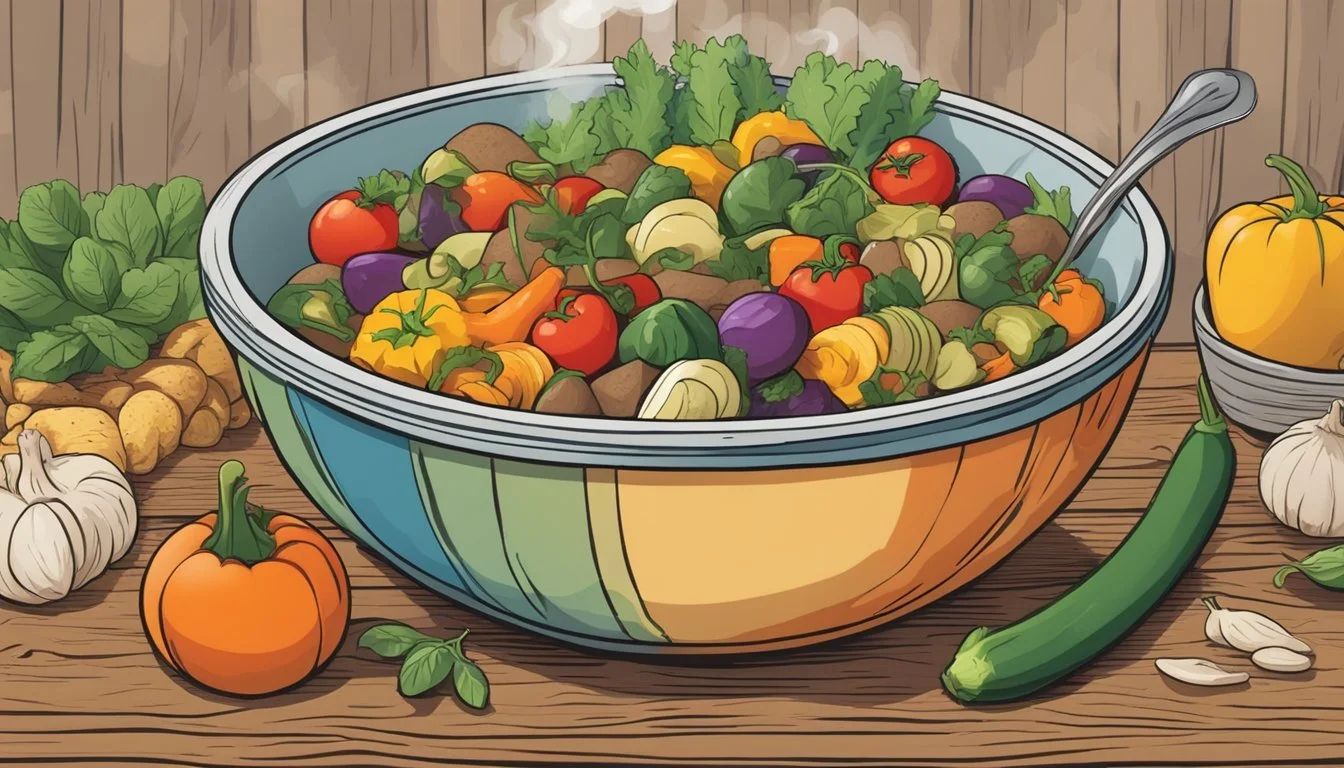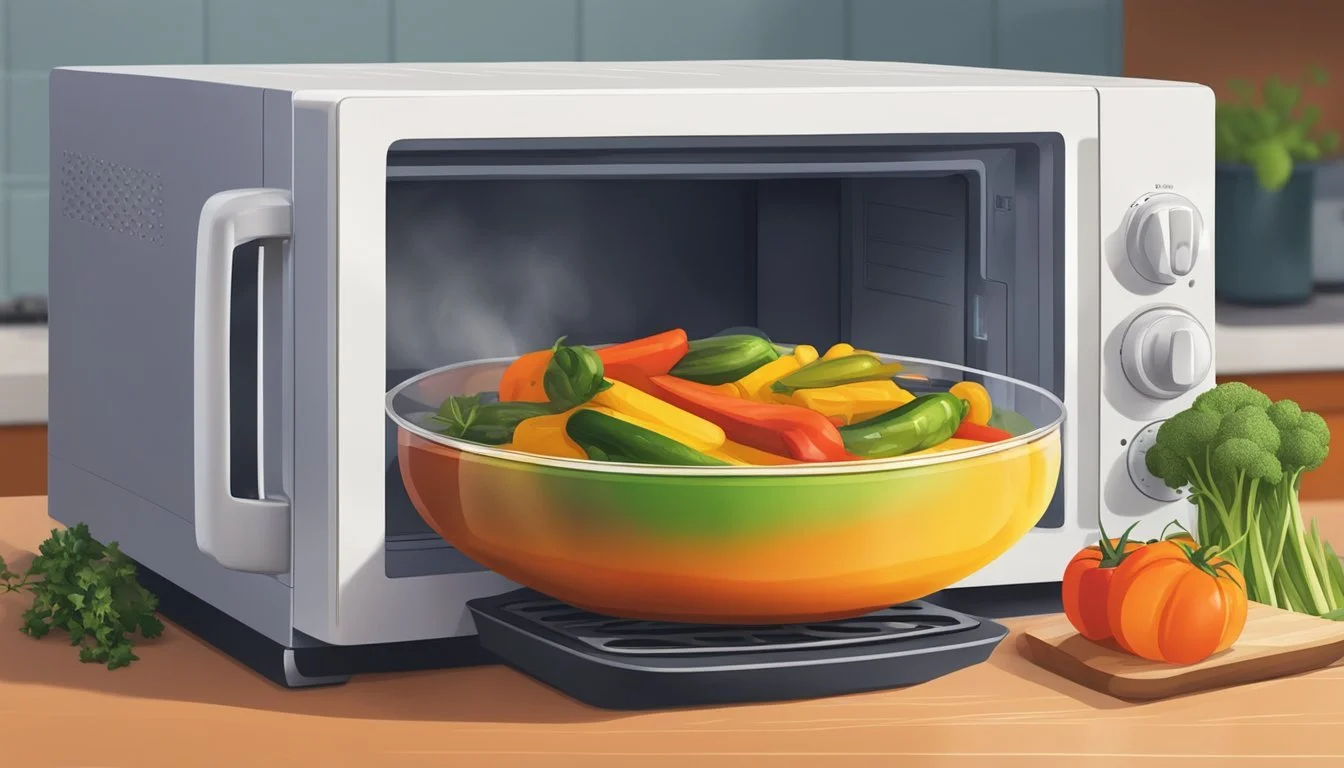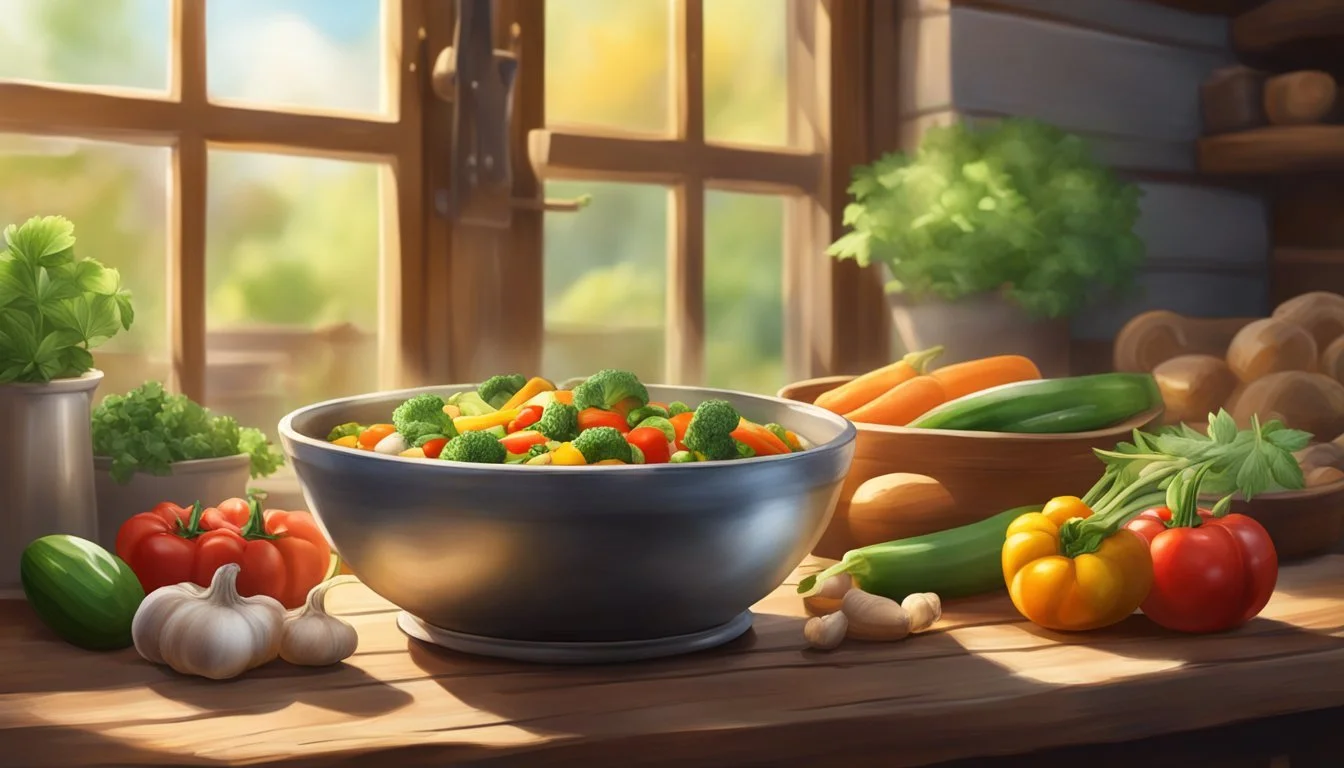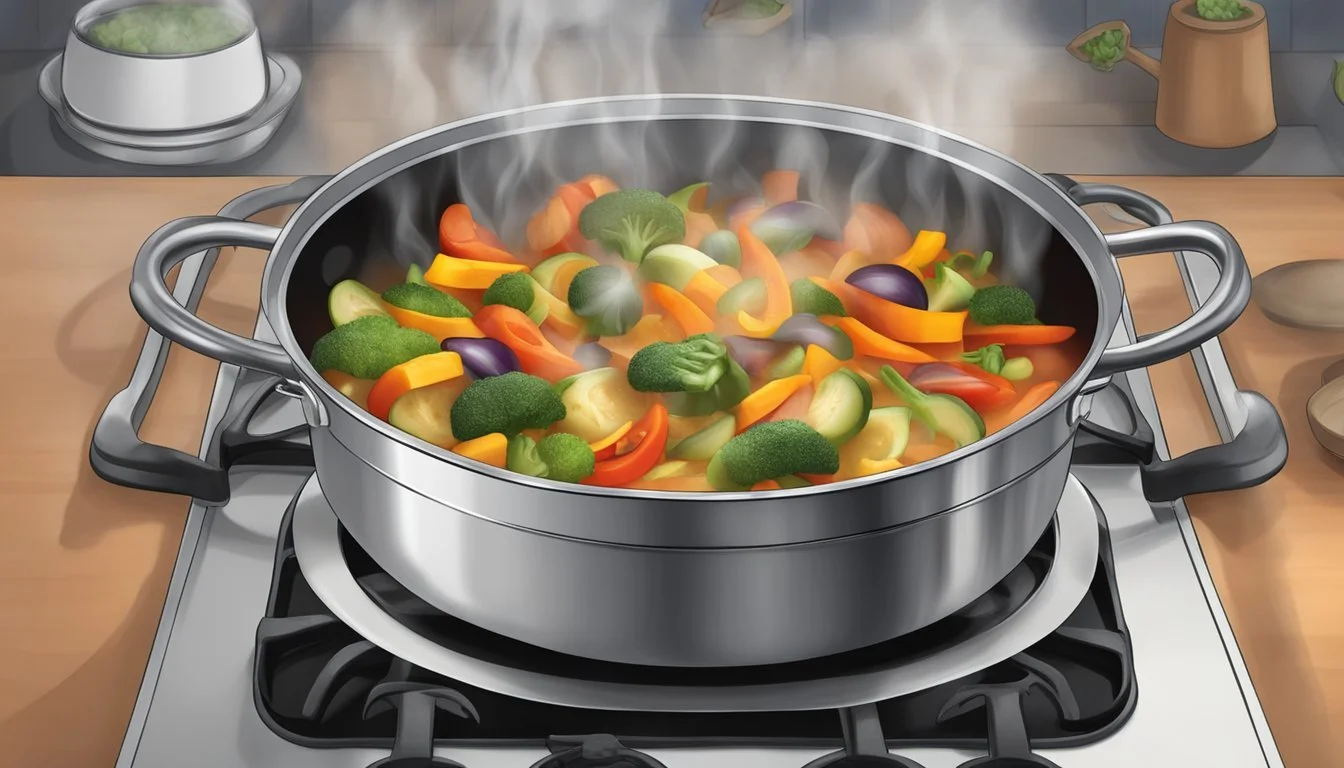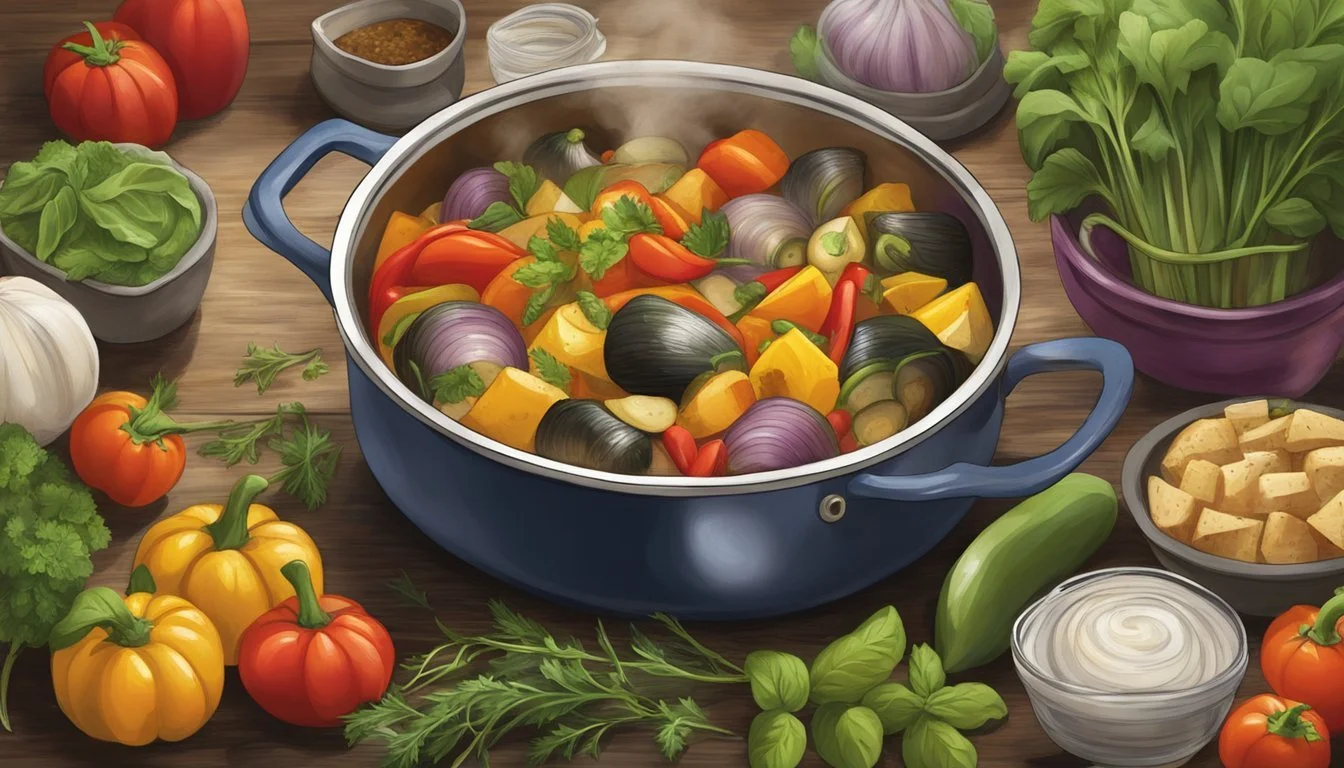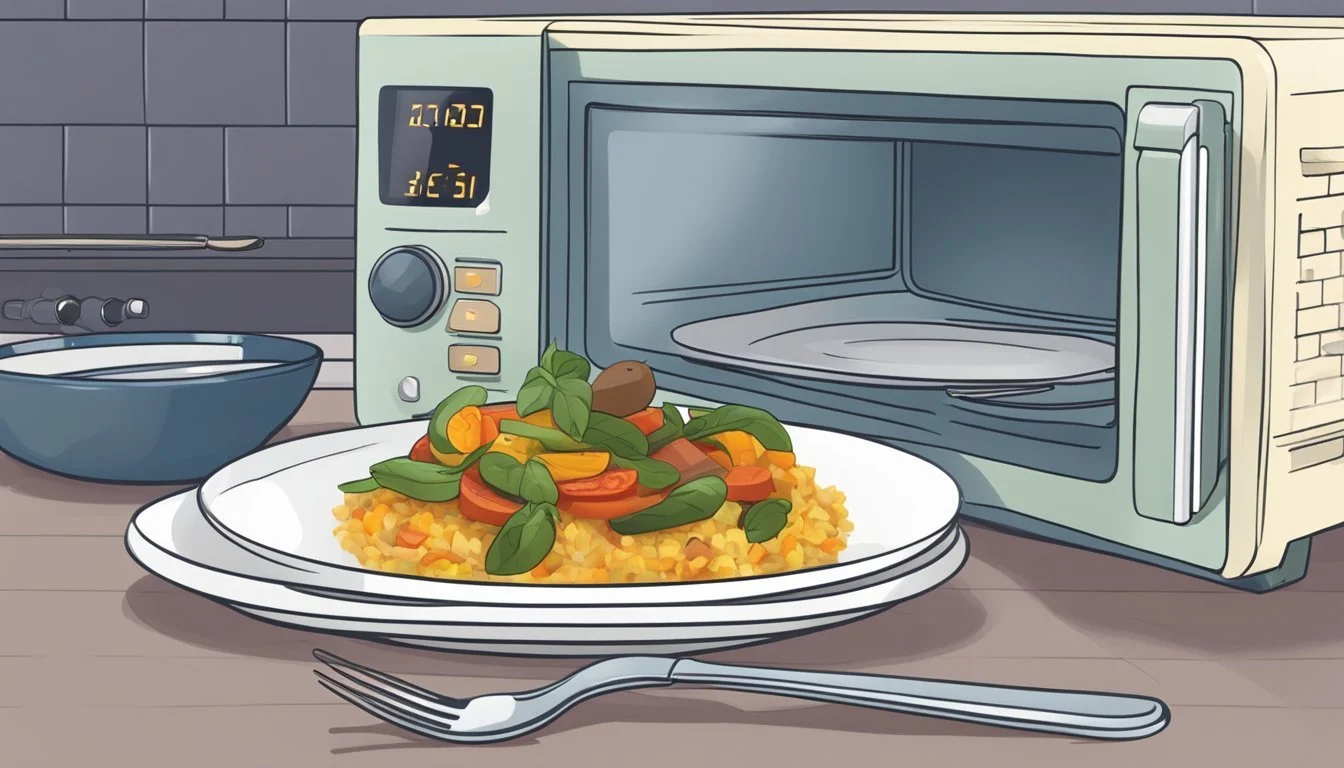How to Reheat Gluten-Free Ratatouille for Optimal Flavor and Texture
Reheating gluten-free ratatouille can be a challenge if one wants to maintain its rich flavors and vibrant textures. With a few simple steps, it's possible to enjoy this dish just as much as when it was first made. To reheat gluten-free ratatouille effectively, use an oven preheated to 300°F (150°C), transfer the dish to an oven-safe container, cover it with foil to retain moisture, and heat for about 15 minutes.
For those who prefer a stovetop method, transferring the ratatouille to a pan with a splash of water or broth and reheating on low to medium heat can also work wonders. Covering the pan with a lid and stirring occasionally will ensure the dish heats evenly and maintains its delightful consistency. This process typically takes about 10-15 minutes.
Each method offers its own advantages in preserving the taste and quality of the ratatouille. By following these techniques, anyone can enjoy a delicious and satisfying meal, even when reheating leftovers.
Understanding Gluten-Free Ratatouille
Ratatouille is a classic French dish that showcases fresh vegetables like eggplant, zucchini, and tomatoes. It's a staple in vegan and vegetarian cuisines, often seasoned with aromatic herbs such as Herbs de Provence, oregano, and thyme.
This dish is naturally gluten-free, perfect for those with gluten sensitivities or Celiac disease.
Key Ingredients
Eggplant: Adds a rich, meaty texture.
Zucchini: Light and mild, balancing the flavors.
Tomatoes: Provide a tangy and juicy base.
Herbs
Herbs de Provence
Fresh Basil
Oregano
Thyme
Cooking Technique
The vegetables are usually sautéed in olive oil to enhance their flavors before they are slowly simmered together. This preserves the texture and brings out the earthy, robust taste of each ingredient.
Incorporating these elements ensures that ratatouille remains a delightful and nutritious part of a gluten-free diet.
Preparation Before Reheating
Proper preparation before reheating gluten-free ratatouille ensures that the dish retains its flavorful essence and texture. Key steps include correct storage methods and selecting the right reheating techniques.
Storing Leftovers Properly
Leftover ratatouille should be cooled to room temperature before storage. Place it in an airtight container to maintain freshness. If storing in the refrigerator, consume within 3-4 days. For longer storage, freeze the ratatouille.
Refrigerator Storage Tips:
Airtight container
Consume within 3-4 days
Freezer Storage Tips:
Use freezer-safe containers
Label with date
Consume within 2-3 months
Selecting Reheating Methods
There are several methods to reheat gluten-free ratatouille effectively. Utilizing the stovetop, oven, or microwave can yield satisfying results, though methods vary:
Stovetop:
Place ratatouille in a non-stick skillet or pot
Add a splash of water or broth for moisture
Reheat on low to medium heat, stirring occasionally for 10-15 minutes
Oven:
Preheat to 300°F (150°C)
Transfer to an oven-safe baking dish
Cover with foil
Heat for 15 minutes, stirring midway
For those preferring a quicker option, a microwave can be used but may not preserve the texture as well:
Use a microwave-safe dish
Cover loosely
Heat in 1-minute intervals, stirring in between
These methods, when executed correctly, can help maintain the dish's integrity while reheating.
Reheating Ratatouille in the Oven
To reheat gluten-free ratatouille in the oven, preheat the oven to 300°F (150°C). This ensures a steady, gentle heat that will warm the dish through without drying it out.
Transfer the ratatouille from the fridge to an oven-safe dish. Cover the dish with aluminum foil to retain moisture and prevent the dish from drying out.
For added flavor, drizzle a touch of extra virgin olive oil over the top.
Place the covered dish in the preheated oven. Heat for 15-20 minutes, depending on the portion size. Check and stir occasionally to ensure even heating.
Optionally, sprinkle some fresh herbs like thyme or basil, sea salt, and ground black pepper to enhance the flavors during reheating.
For best results, remove the foil during the last 5 minutes to allow the top to slightly crisp.
Alternative Reheating Methods
When reheating gluten-free ratatouille, using the stovetop or microwave ensures that the dish retains its texture and flavor. Each method requires specific steps to achieve the best results.
Using the Stovetop
Reheating ratatouille on the stovetop allows for a gentle warming process that preserves the flavors and texture. To start, transfer the ratatouille into a non-stick pan or pot. Add a small amount of water, broth, or olive oil to create moisture, preventing the ratatouille from sticking.
Cover the pan with a lid and heat the dish on medium to low heat. Stir the ratatouille occasionally to ensure even heating throughout. This method typically takes about 10-15 minutes. Maintaining a low to medium heat is crucial for keeping the vegetables from becoming too mushy, retaining both texture and nutritional value.
Heating in the Microwave
Heating gluten-free ratatouille in the microwave provides a quick and convenient option. For best results, transfer the ratatouille to a microwave-safe dish. Cover the dish loosely with a microwave-safe lid or plastic wrap, leaving a small vent to release steam.
Microwave the ratatouille on medium power in intervals of about 1-2 minutes. Stir the dish between intervals to ensure even heating. This method usually requires 4-6 minutes, depending on the portion size. Using medium power and stirring helps maintain the texture, preventing the vegetables from getting too soggy.
Serving Suggestions After Reheating
Reheated gluten-free ratatouille pairs well with various dishes to create a delicious meal.
For a main dish, serve it over a base of cooked rice or quinoa. These grains absorb the flavors of the ratatouille nicely.
As a side dish, place reheated ratatouille next to grilled chicken or baked fish.
Another option is to serve it on a bed of gluten-free pasta, enhancing its appeal as a hearty main course.
If you enjoy bread, use gluten-free baguettes or rolls. They can be toasted and served with the ratatouille, allowing you to scoop up every flavorful bite.
These serving suggestions make reheated ratatouille versatile and satisfying for any meal.
Maintaining Taste and Texture
To keep your gluten-free ratatouille delicious, pay special attention to seasoning and freshness. This approach ensures flavors remain vibrant and the dish retains its ideal texture.
Seasoning Adjustments
After reheating, ratatouille may need a touch of extra seasoning. Start by tasting the dish and determine if it has lost some of its original flavors. Salt and pepper can often balance and enhance reheated meals. Adding a pinch of each could restore the dish's initial depth.
In addition to the basics, consider adding fresh herbs like basil, oregano, or thyme. These herbs can revitalize the dish and counterbalance any muted flavors. A drizzle of olive oil can also enrich the texture, especially if reheating made the ratatouille slightly dry. Remember, small adjustments can significantly impact, so add seasonings gradually and taste frequently.
Adding Freshness
Reintroducing freshness is key to a successful reheated ratatouille. After warming, garnish with freshly chopped herbs. Parsley or cilantro can add a burst of color and flavor that makes the dish appealing again. These herbs are best added at the end to maintain their brightness and prevent them from wilting.
For added zest, consider a squeeze of lemon juice or a splash of balsamic vinegar. These acidic elements can enhance flavors without overpowering the dish. Lastly, incorporating some raw vegetables like diced tomatoes or bell peppers before serving can improve both taste and texture, making the reheated dish almost as delightful as when it was freshly made.
Health and Nutritional Considerations
When reheating gluten-free ratatouille, retaining its nutritional benefits is essential. This dish, typically made with fresh vegetables like zucchini, eggplant, and bell peppers, offers a variety of vitamins and minerals that contribute to a balanced diet.
Ratatouille is naturally vegan, making it an ideal option for those following plant-based diets. It's high in fiber, which aids in digestion and promotes a feeling of fullness.
Key Nutritional Info:
Calories: Low
Protein: Moderate, primarily from vegetables
Carbs: Low-carb due to vegetable base
Fat: Minimal, depending on olive oil usage
The inclusion of various fresh vegetables ensures the dish is rich in antioxidants and phytonutrients, supporting overall health. For those on a low-carb diet, ratatouille provides a tasty option that aligns with their nutritional goals.
Protein Consideration:
While ratatouille is not a high-protein dish, additional plant-based proteins such as chickpeas or tofu can be added to enhance its nutritional profile. This makes it more satisfying for those needing more protein in their meals.
Healthy Recipe Tips:
Use olive oil to add healthy fats.
Include a diverse array of vegetables to maximize nutrient intake.
Avoid overcooking to preserve the vitamin and mineral content.
Nutrition Facts (Per Serving):
Calories: Approximately 100-150
Protein: 2-4 grams
Carbohydrates: 10-15 grams
Fat: 5-7 grams
Fiber: 3-5 grams
These considerations ensure that reheated gluten-free ratatouille remains a nutritious and flavorful dish.
Pro Tips for Perfect Ratatouille
Achieving perfect ratatouille involves selecting high-quality vegetables, precision slicing, and meticulous layering. These elements ensure that the final dish is both visually appealing and delicious.
Choosing the Right Vegetables
Choosing the right vegetables is essential for an outstanding ratatouille. Fresh, seasonal produce enhances the flavors and textures. Key ingredients should include aubergine (eggplants), bell peppers, zucchini, yellow squash, and tomatoes.
When selecting aubergine, opt for firm, shiny ones without blemishes. Bell peppers should be vibrant and free from soft spots. Zucchini and yellow squash should feel heavy for their size and be free of nicks. Tomatoes should be ripe but still firm to avoid becoming mushy during cooking.
The Art of Slicing
Precise slicing is crucial to ensure even cooking and an appealing presentation. Using a mandoline can help achieve uniform slices, though a chef's knife works well with practiced skill.
Cut aubergine, zucchini, yellow squash, and tomatoes into even, thin rounds. Aim for slices about 1/8-inch thick. Bell peppers should be cored and cut into thin strips. Uniform slices ensure that all vegetables cook at the same rate and enhance the dish's layered appearance.
When slicing, be mindful of safety. Using a cut-resistant glove with the mandoline can prevent injuries. Consistent slicing also ensures that each bite is balanced in flavor and texture.
Layering Techniques
Layering is where the magic happens, transforming simple ingredients into a beautiful ratatouille. Begin by spreading a thin layer of tomato sauce on the bottom of the baking dish to prevent sticking and infuse flavor.
Next, arrange the vegetable slices in a pattern, alternating colors and types. For instance, place a slice of aubergine, followed by zucchini, yellow squash, and tomato. Continue this sequence until the dish is filled.
Tight layering is important. Overlapping vegetables slightly allows them to cook evenly and prevents drying out. Once layered, drizzle a little olive oil over the top and season with herbs like thyme and rosemary for additional flavor.
To bake, cover the dish with foil and cook at 375°F (190°C) for about 45 minutes. Remove the foil for the last 10-15 minutes to let the tops of the vegetables caramelize slightly. This method retains moisture while achieving a delicious, roasted finish.
Gluten-Free Ratatouille Variations
For those following a gluten-free diet, there are several variations of ratatouille that can bring new flavors and textures to the table.
Classic Ratatouille
The classic ratatouille recipe typically includes ingredients such as eggplant, zucchini, bell peppers, onions, and tomatoes. Herbes de Provence adds a unique flavor reminiscent of southern French cuisine.
Vegan Ratatouille
A vegan ratatouille aligns perfectly with gluten-free needs. All traditional ingredients are naturally gluten-free and plant-based, making this an easy ratatouille recipe to follow. Emphasize fresh vegetables and the aromatic blend of herbes de Provence.
Roasted Ratatouille
For a more caramelized texture, try roasted ratatouille. Arrange the vegetables on a baking sheet and roast at 425°F for about 40 minutes, flipping once halfway through. This method concentrates the flavors and adds a delightful crisp.
Summer Vegetable Ratatouille
Adapt your recipe based on the season. A summer vegetable ratatouille might focus on using zucchini, bell peppers, and tomatoes. This recipe often involves sautéing vegetables on the stovetop, making it a quick and easy ratatouille recipe.
Stewed Ratatouille
For a heartier, more comforting meal, opt for a stewed ratatouille. Cook all vegetables together slowly in a pot, allowing flavors to blend deeply. Add in some herbes de Provence and let the mixture simmer until everything is tender.
Provencal Ratatouille
Influenced by the cuisine of Provence, this variation includes additional herbs and sometimes olives for a richer taste. It maintains the integrity of being gluten-free while adding a touch of Mediterranean flair.
Explore these gluten-free ratatouille variations to keep your meals vibrant and interesting, while adhering to dietary needs.
Preserving and Enhancing Flavor
Maintaining the taste and texture of gluten-free ratatouille while reheating can be achieved through careful selection of herbs and attention to the sauce consistency.
Herb Selection
Selecting fresh herbs like thyme, rosemary, basil, and oregano can significantly enhance the flavor of your reheated ratatouille.
Thyme and rosemary provide robust, earthy notes that deepen the dish's complexity. These herbs can be added towards the end of the reheating process to prevent bitterness. Basil offers a sweet, aromatic flavor that lifts the overall taste profile, and it should be added fresh just before serving. Oregano contributes a slightly peppery and bitter flavor that pairs well with the ratatouille's rich ingredients. Using fresh over dried herbs ensures a vibrant and intense flavor.
Sauce and Texture
Ensuring the right consistency of the sauce is key to a well-reheated ratatouille.
Olive oil should be added when reheating to maintain the dish's moisture and richness. A small amount of red wine can also be included to enhance the depth of the sauce. If the sauce appears too thick, adding a bit of water or broth helps maintain the desired consistency. Incorporating additional crushed tomatoes can revive the sauce's robustness, ensuring a balanced taste. Consistent stirring during reheating prevents sticking and promotes even heating. Use a low to medium heat to retain the texture of the vegetables, avoiding mushiness.
Cultural Significance of Ratatouille
Ratatouille, a traditional French vegetable dish, holds a cherished place in French cuisine. Originating from Provence, it showcases the region’s bountiful produce and Mediterranean flavors.
This dish exemplifies the simplicity and richness of peasant food, yet has grown in popularity globally.
Several cookbooks spotlight ratatouille, celebrating its versatility and wholesome ingredients. It’s often featured in Instagram feeds, reflecting its status as a modern culinary icon.
Ingredients like eggplant, zucchini, bell peppers, tomatoes, onions, and garlic not only provide vibrant flavors but also represent the agricultural heritage of Provence.
French chefs and home cooks alike embrace ratatouille for its rustic charm and nutritious qualities.
Equipment Essentials for Reheating
When reheating gluten-free ratatouille, choosing the right equipment can ensure optimal flavor and texture. Here are the essentials you need:
Oven
An oven is ideal for reheating large portions. Preheat it to 300°F (150°C). Use an oven-safe baking dish for the ratatouille. Cover the dish with foil to keep the moisture. Heat for about 15 minutes, stirring occasionally.
Stovetop
For smaller portions, the stovetop offers control over the heating process. Use a pot or pan and add a splash of water or broth to prevent sticking. Cover with a lid and reheat on low to medium heat, stirring occasionally for 10-15 minutes.
Microwave
Though not always ideal for maintaining texture, a microwave is the quickest option. Use a microwave-safe dish and cover it to prevent splatters. Heat in short intervals, stirring in between, to ensure even heating.
Equipment List
Equipment Purpose Usage Tips Baking Dish Oven reheating Cover with foil to trap moisture Oven Even heating for large portions Preheat and stir occasionally Pot/Pan Stovetop reheating Add water or broth to prevent sticking Microwave Quick reheating Use short intervals and stir frequently
Using the right equipment can help you enjoy your gluten-free ratatouille just as delicious as when it was first made. Remember, gentle reheating preserves the dish’s flavors and texture.





